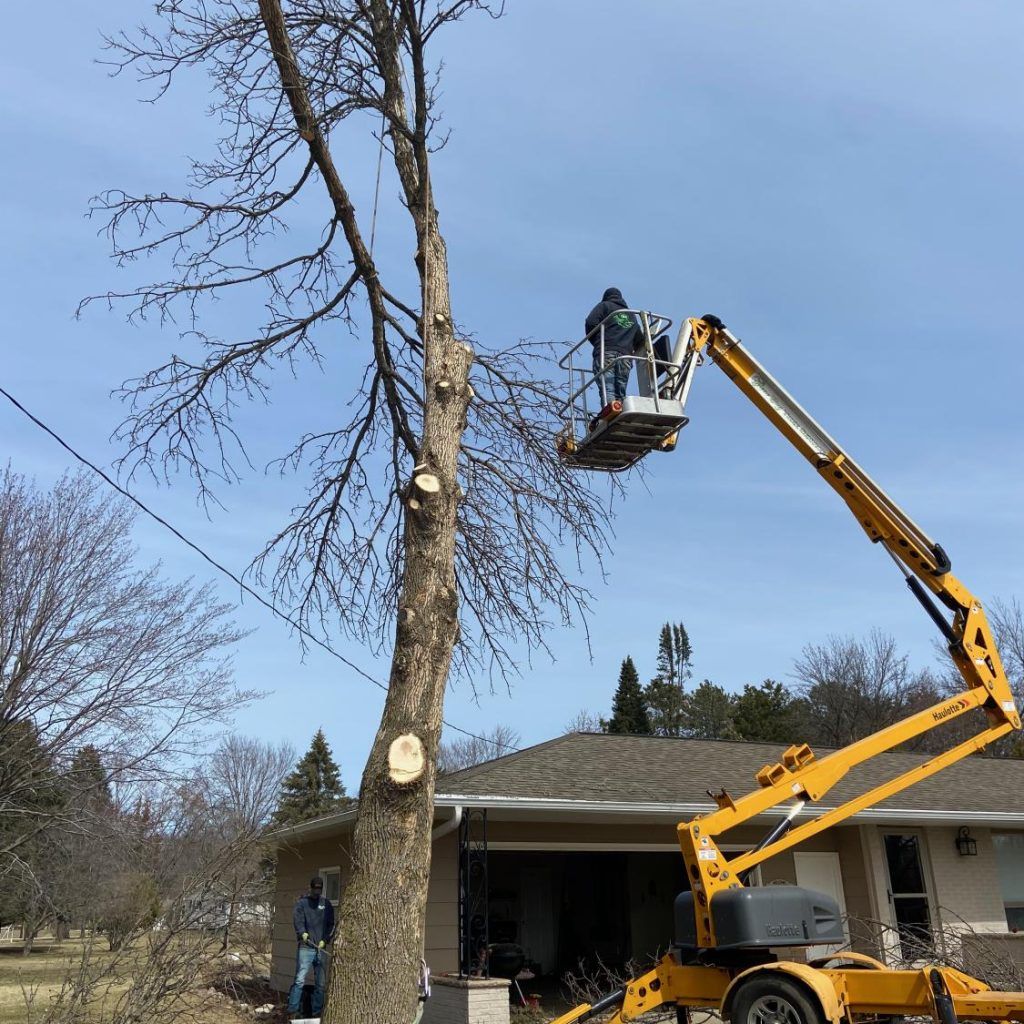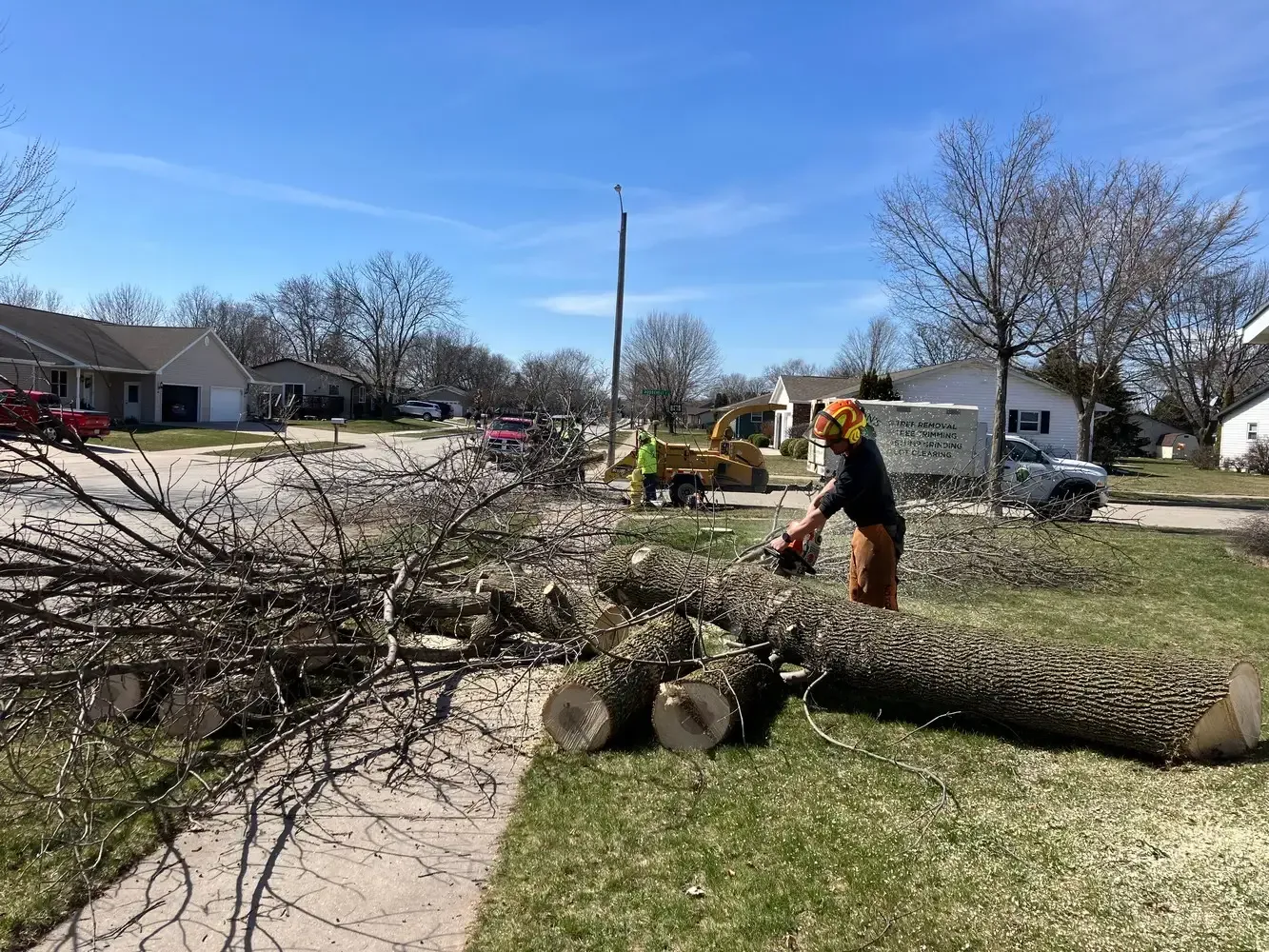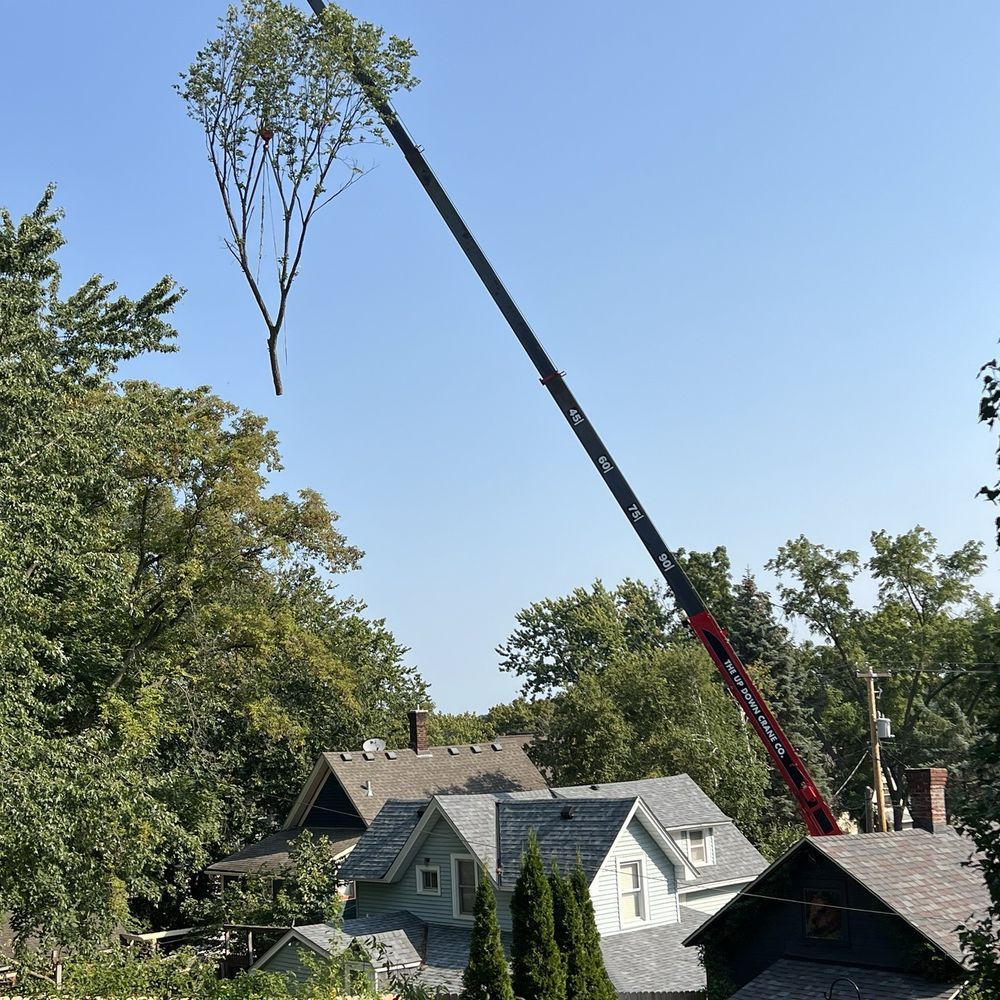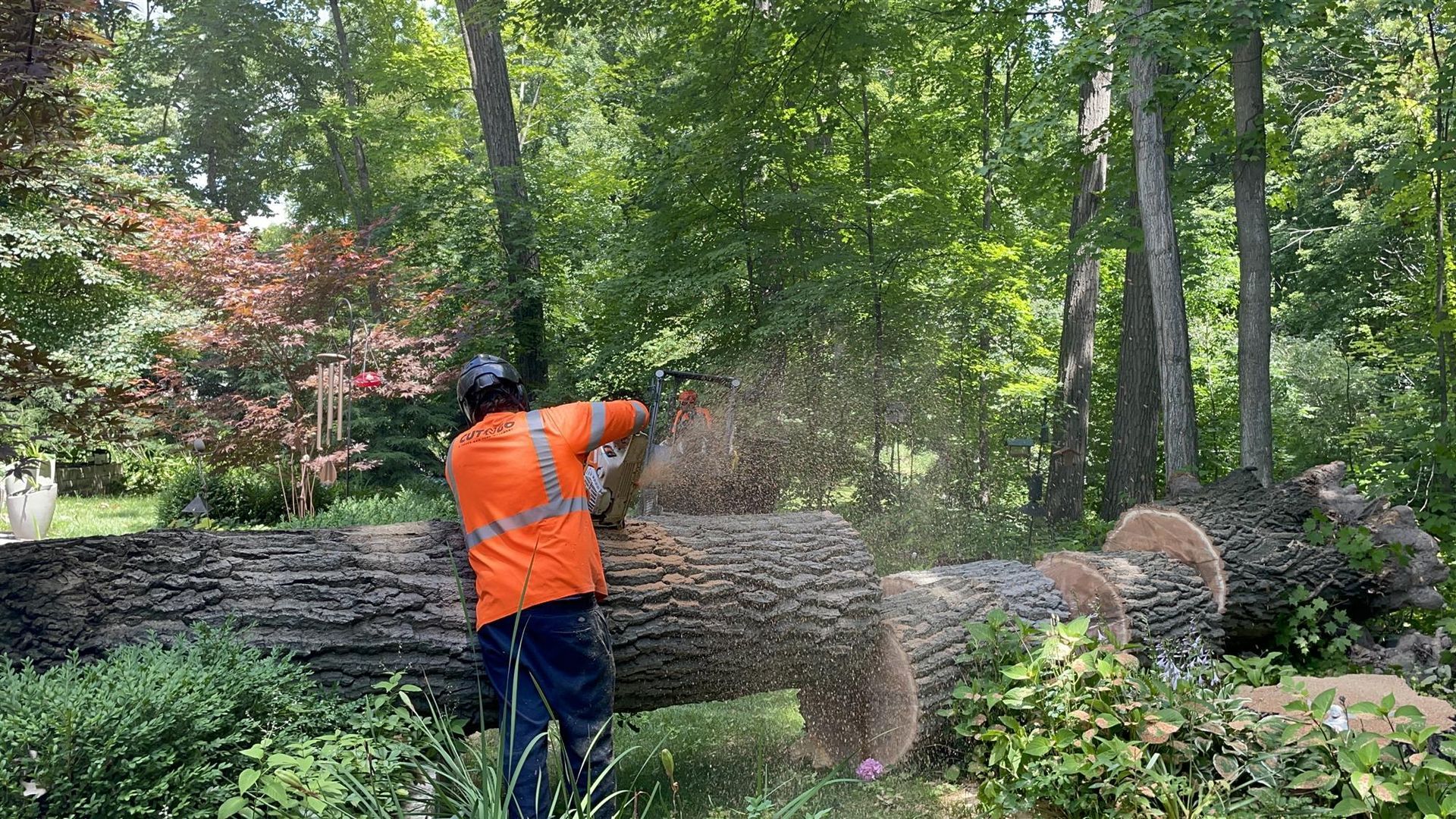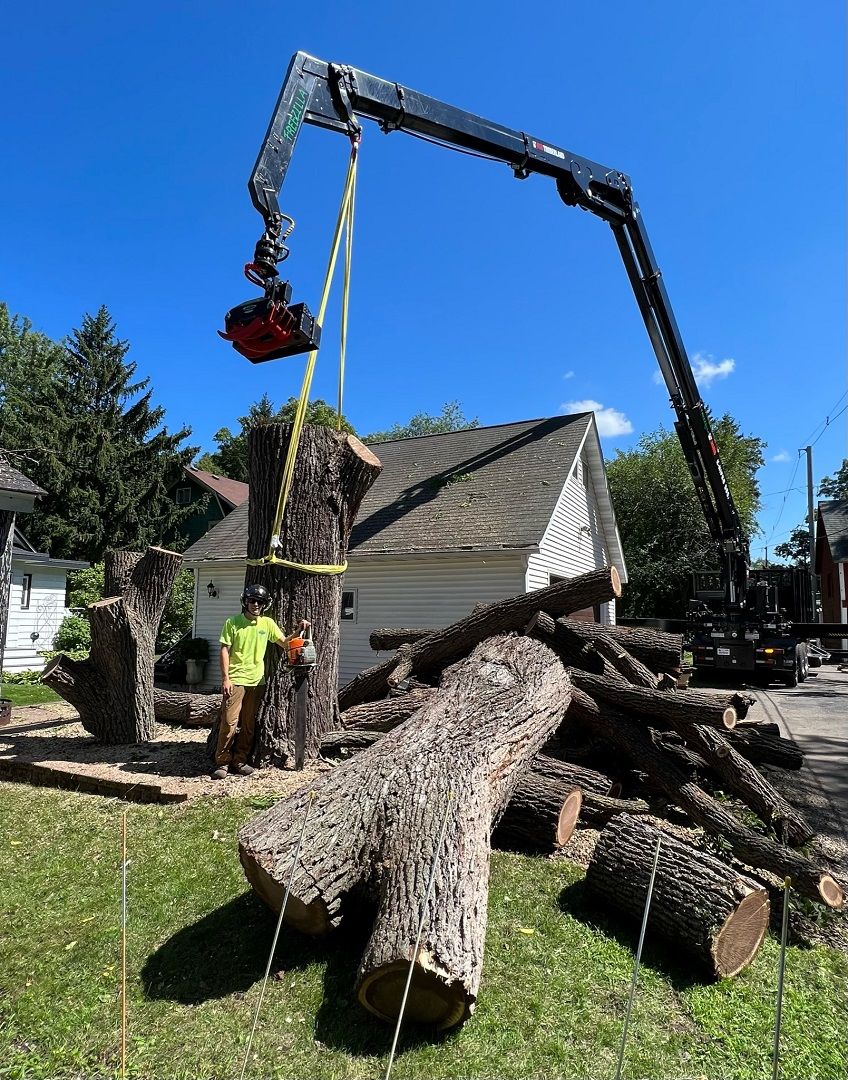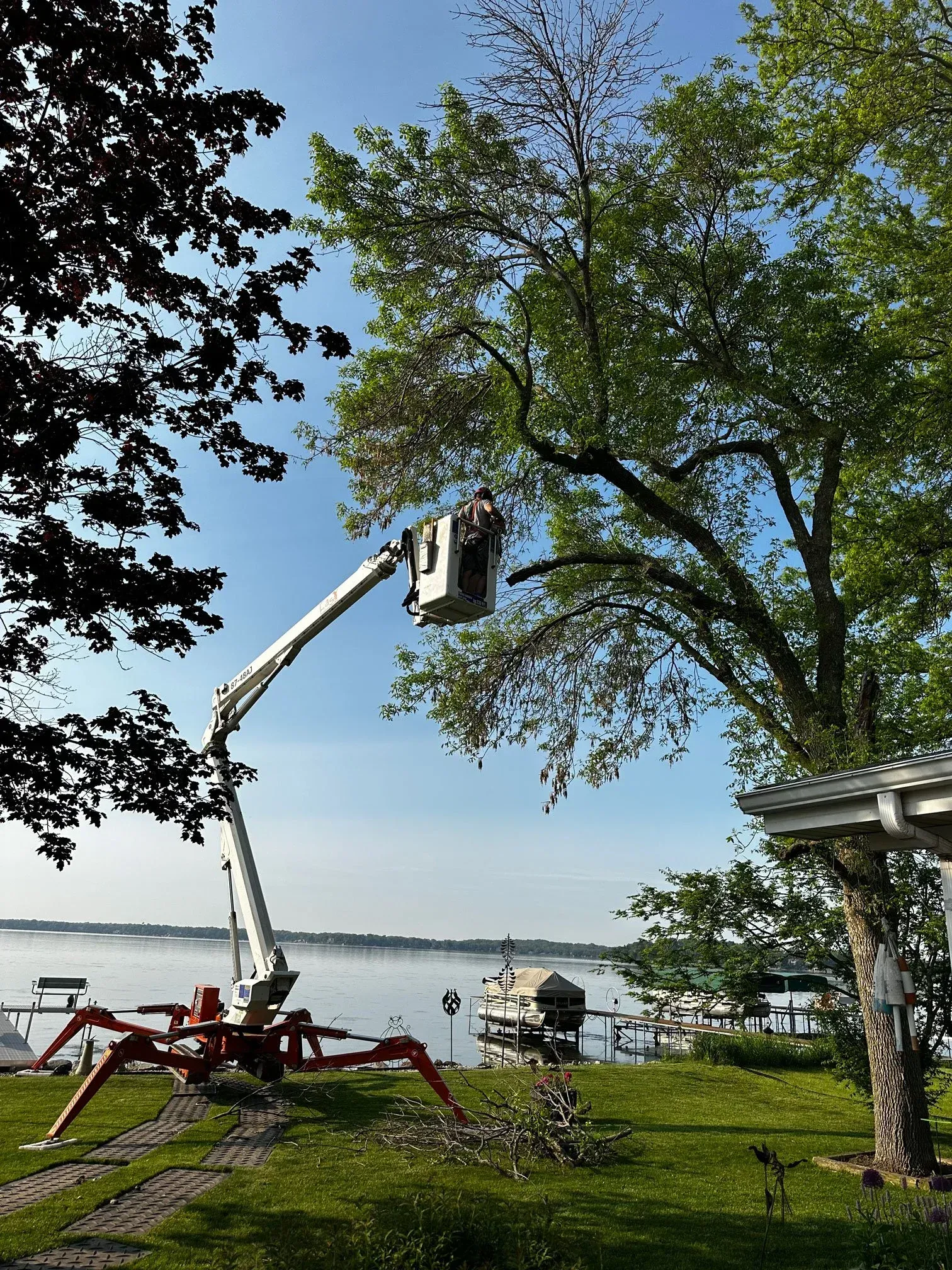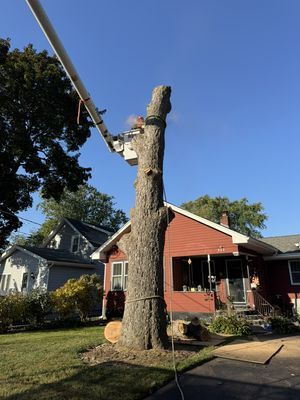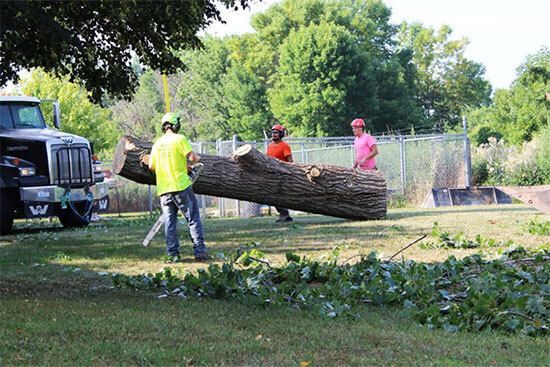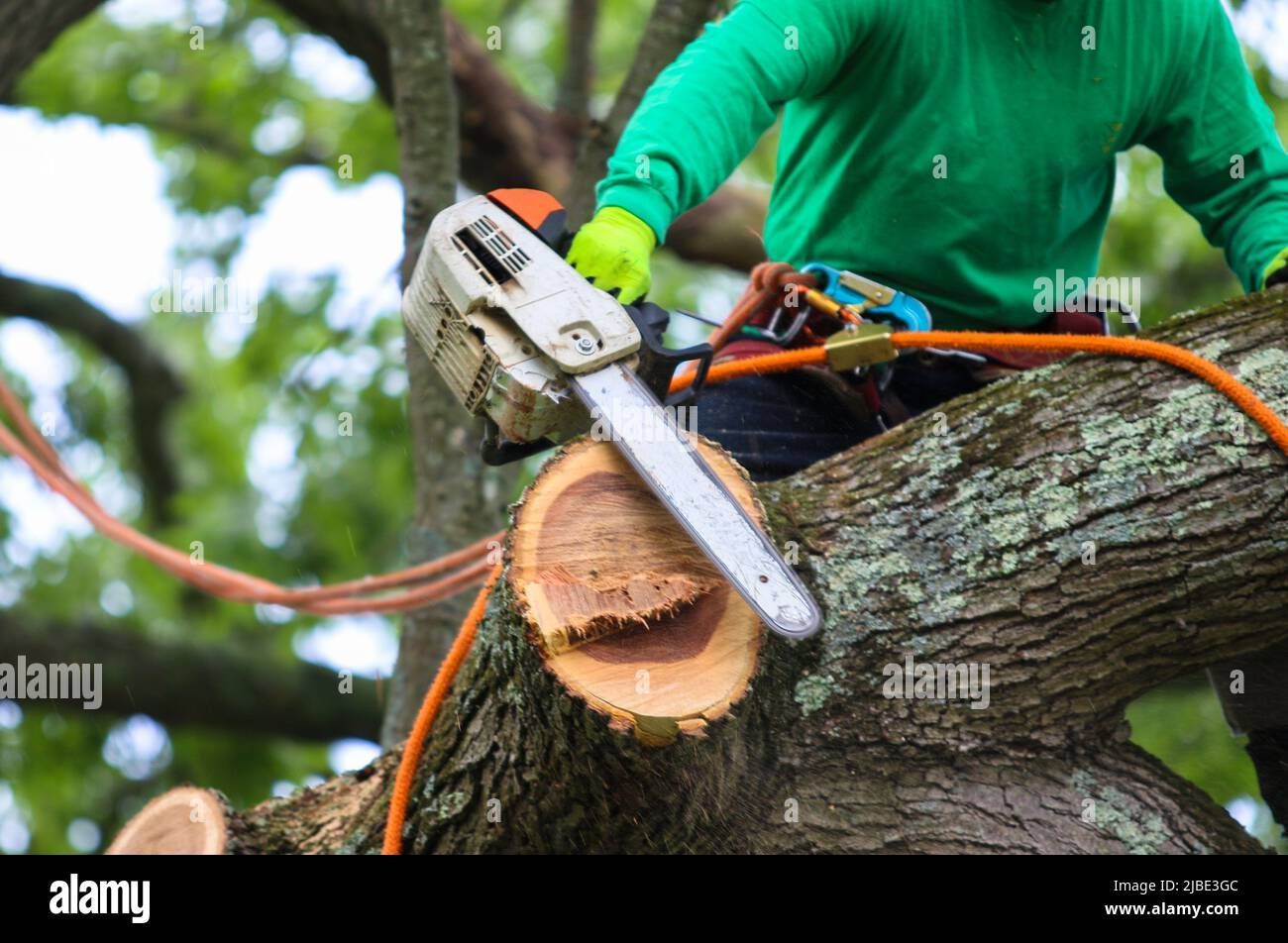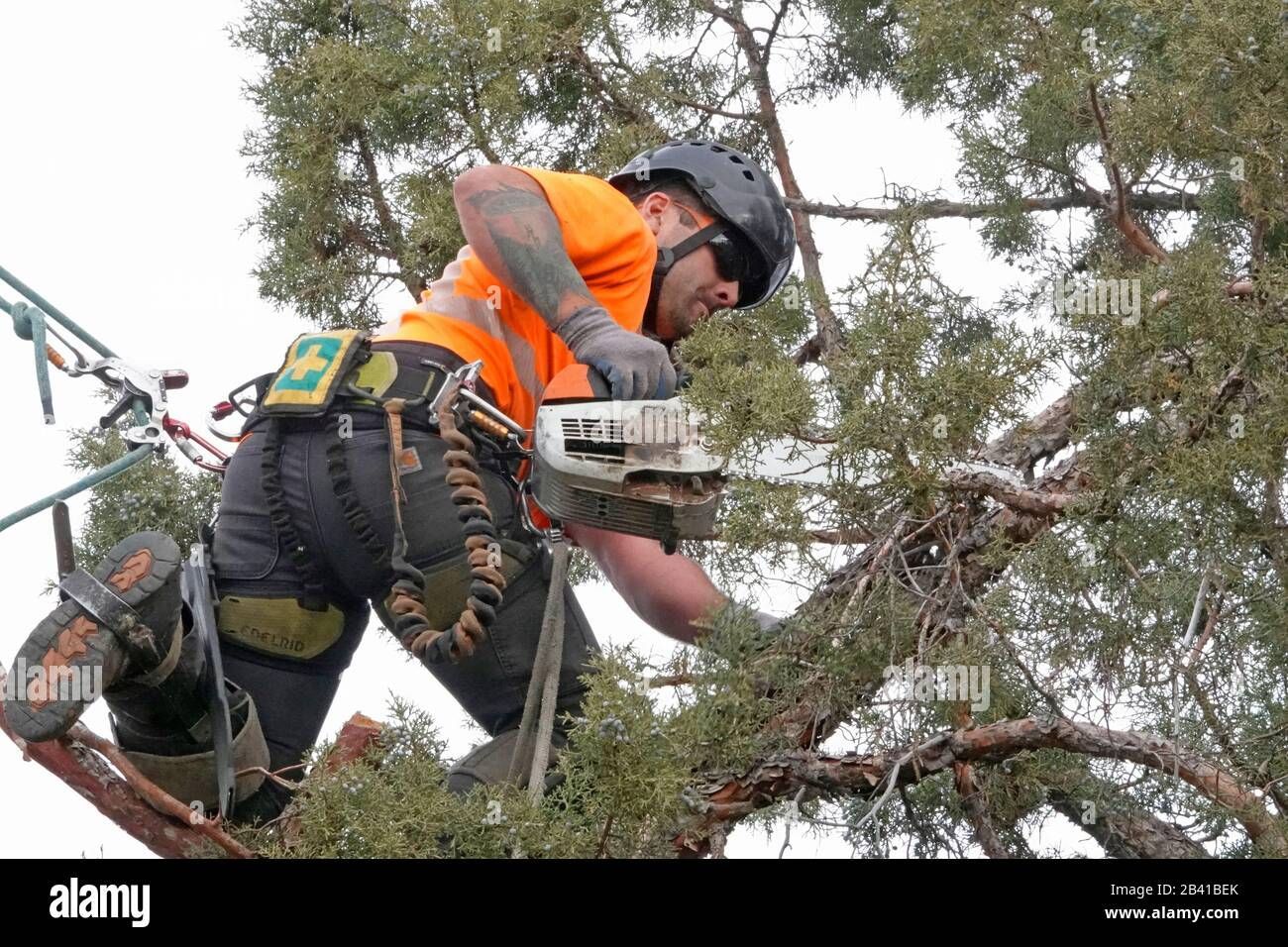Tree Stump Grinding vs. Removal: Which Is Better in Iowa City?
Tree Stump Grinding vs. Removal: Which Is Better in Iowa City?
Tree removal often solves the immediate problem of a diseased, storm-damaged, or hazardous tree—but what about the stump left behind? In Iowa City and across Eastern Iowa, homeowners are often left wondering whether it’s best to grind the stump down or remove it entirely. Both options serve different purposes, and the right choice depends on your property, your goals, and the condition of the tree.
Frank’s Tree Service has extensive experience helping homeowners evaluate their options. This blog breaks down the differences between stump grinding and stump removal, their pros and cons, and how to decide which approach is best for your yard.
Why Deal with Tree Stumps at All?
At first glance, leaving a tree stump might seem harmless, but it creates a range of long-term issues.
- Safety Hazards: Stumps are tripping hazards, especially for children and pets.
- Lawn Maintenance Problems: Mowing or landscaping around a stump is inconvenient and can damage equipment.
- Pest Attraction: Termites, ants, and beetles often nest in decaying stumps, which can spread infestations to nearby trees or even homes.
- Regrowth Potential: Many species attempt to regrow from stumps, leading to unsightly sprouts and weakened trees.
- Curb Appeal: A leftover stump can make an otherwise well-kept yard look unfinished.
For these reasons, most homeowners in Iowa City choose either grinding or full removal.
What Is Stump Grinding?
Stump grinding uses a specialized machine to grind the stump down below ground level. The stump is shredded into wood chips, leaving behind a smooth, flat surface that can be covered with soil or grass seed.
Pros of Stump Grinding
- Faster and Less Invasive: Grinding is quicker and doesn’t require digging up roots.
- Cost-Effective: Typically less expensive than full removal.
- Improved Aesthetics: The stump is no longer visible, and the area blends into the yard.
- Soil-Friendly: Leaves most of the root system undisturbed, which minimizes disruption to surrounding landscaping.
Cons of Stump Grinding
- Roots Remain: The underground root system is left to decay naturally, which can take years.
- Possible Regrowth: Some species may send up sprouts from leftover roots.
- Not Always Suitable: If future construction (like a driveway or patio) is planned, grinding may not remove enough of the root system.
What Is Stump Removal?
Stump removal is a more intensive process. It involves digging or excavating the entire stump and root system out of the ground.
Pros of Stump Removal
- Complete Elimination: Both the stump and roots are gone, reducing the chance of regrowth.
- Prepares for Construction: Essential if the area will be used for building, paving, or planting a new tree.
- Long-Term Solution: No hidden decaying wood left underground.
Cons of Stump Removal
- Labor-Intensive: Requires heavy equipment and more time.
- Higher Cost: More expensive due to the complexity of the work.
- Landscape Disruption: Leaves behind a large hole that must be filled and leveled.
Which Option Is Better for Iowa City Homeowners?
The choice between grinding and removal depends on several factors:
- Future Plans for the Area
- If you plan to plant grass or small landscaping features, stump grinding is usually sufficient.
- If you intend to build a structure, driveway, or plant another tree in the exact location, full removal is better.
- Budget Considerations
- Grinding is generally more affordable and works well in most residential settings.
- Removal may cost more upfront but prevents potential future issues with construction or regrowth.
- Tree Species
- Some trees, like silver maples or willows, are notorious for sprouting from remaining roots, making removal a stronger option.
- Property Aesthetics
- Grinding is often chosen for its speed and ability to restore a yard’s appearance quickly.
For many homeowners in Iowa City, stump grinding is the go-to choice for convenience and cost-effectiveness. However, removal remains the best option when long-term development is planned.
Customer Testimony
"When we had an old maple removed from our backyard in Iowa City, we weren’t sure whether to grind the stump or remove it. Frank’s Tree Service explained the pros and cons of both options clearly. Since we wanted to plant grass in that area, they recommended grinding. The crew worked quickly, cleaned up everything, and even spread the mulch chips for us. Our yard looks fantastic now, and we couldn’t be happier with the service."
— Karen D., Iowa City
Environmental Considerations
Both methods affect the environment differently. Grinding leaves organic material (wood chips and roots) to decompose naturally, enriching the soil over time. Removal, on the other hand, clears everything but leaves a larger disturbance to the ground.
For eco-conscious homeowners, grinding is often the preferred method because it balances efficiency with sustainability.
Why Choose Frank’s Tree Service?
Attempting stump work on your own can be dangerous and time-consuming. Stump grinders and excavation tools are heavy-duty machines that require experience to operate safely. Frank’s Tree Service offers:
- Professional Equipment: High-powered grinders and excavation tools for efficient work.
- Expert Knowledge: Understanding of Iowa’s soil, tree species, and safety standards.
- Cleanup Services: Complete debris removal or recycling wood chips into usable mulch.
- Safety-First Approach: Protecting homeowners, property, and surrounding landscapes.
- Customized Solutions: Recommendations based on your goals and budget.
Frequently Asked Questions (FAQs)
Q1: How long does stump grinding take?
Most stumps can be ground down in one to two hours, depending on the size and species of the tree.
Q2: Will a stump grow back after grinding?
It’s possible with some species. Sprouts may appear, but regular mowing or targeted treatments can prevent regrowth.
Q3: Is stump removal always necessary?
No. Removal is mainly required if you’re planning construction or replanting in the exact same location. For most homeowners, grinding is sufficient.
Q4: What happens to the wood chips after grinding?
Homeowners can keep the wood chips for mulch, spread them over the ground, or have them hauled away by the crew.
Q5: Can I plant a new tree where the stump was ground?
It’s best to plant slightly away from the ground stump site, as the decaying roots can affect soil composition. Full removal is better if you plan to replant in the exact location.
Q6: Does insurance cover stump removal or grinding?
Policies vary. In most cases, if the tree was removed due to storm damage and caused property damage, some costs may be covered. Always check your specific policy.
Final Thoughts
For homeowners in Iowa City, deciding between tree stump grinding and removal depends on your property goals, budget, and long-term plans. Grinding is typically quicker, less invasive, and cost-effective, making it the most popular option. Full removal, however, is the best choice if you need a clean slate for building or replanting.
Whichever option you choose, trusting professionals like Frank’s Tree Service ensures the work is done safely, efficiently, and with your property’s long-term health in mind. Removing or grinding a stump is not just about aesthetics—it’s about protecting your yard from hazards, pests, and future complications.

